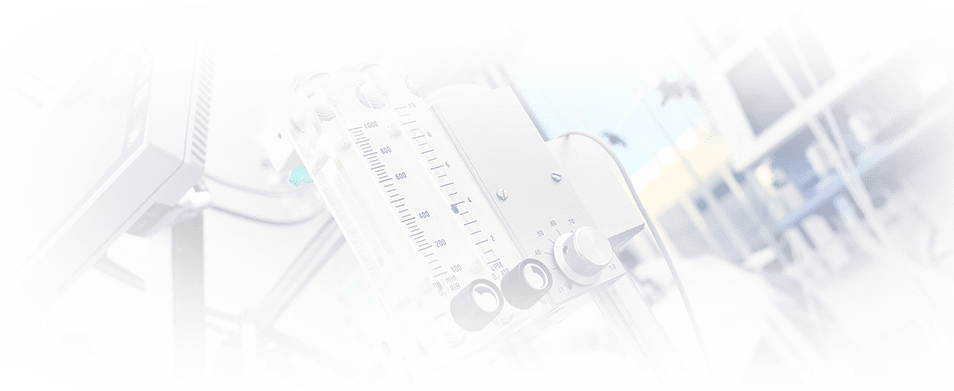Laparoscopic urology surgery
In recent years, paroscopic operations have been widely used in the surgical treatment of urological patients. In this regard, a new direction has appeared in urology, which is commonly called urological laparoscopic surgery. One of the main differences between laparoscopic and surgical techniques is the way in which the surgeon obtains anatomical information regarding the location of the surgical site. Laparoscopic surgery is an operation on the kidneys and ureters in the retroperitoneal space through the abdomen by punctures. The main feature of laparoscopic operations is that all interventions are performed almost without incisions - through small punctures on the skin (instruments 5 and 10 mm in diameter) under the control of a TV. The surgeon inserts instruments through the abdomen, opens the peritoneum, and then enters the retroperitoneal space, where the kidney, ureter and their vessels are located. The workspace is created by injecting carbon dioxide (harmless gas) into the abdomen.
The advantages of laparoscopic treatment of many urological diseases over the traditional open method are beyond doubt:
- Minimal trauma: small punctures of the skin are made to install special ports (guide tubes) through which working tools are passed.
- Minimal invasiveness: during laparoscopic operations, there is no need to perform large skin incisions and excessive traumatic separation of the underlying layers (subcutaneous tissue, fascia, muscles). It is this particular feature of the laparoscopic technique that leads to rapid healing of postoperative wounds and recovery. In addition, the manipulation is carried out under high magnification, which makes it possible to highlight the area of the operation itself as accurately as possible, avoiding additional trauma to the surrounding organs and tissues.
- Minimum risk of infection: Small punctures and the use of disposable instruments minimize the risk of infection.
- Minimal bleeding: Delicate and precise selection of the surgical area is achieved through the use of high-tech equipment and instruments, minimizing trauma and, consequently, the risk of bleeding.
- Cosmetic effect: the scars on the skin, after its puncture (up to 1 cm), remain barely noticeable and after 4-6 months they practically disappear.
- Short terms of rehabilitation and recovery in the postoperative period in comparison with abdominal operations.
| Laparoscopic prostatectomy |
| Laparoscopic excision of renal cysts |
| Laparoscopic plasty of the pelvic-ureteric segment |
| Laparoscopic clipping of the testicular vein for varicocele |
| Ureterolithotomy |
| Nephrectomy |
| Kidney resection |
Laparoscopic prostatectomy
Prostate cancer is one of the most common diseases in the world. In the structure of oncological diseases in a number of countries, prostate cancer comes in 2-3 place after lung and stomach cancer, and in the USA - in first place.
Up to 400 thousand cases of prostate cancer are diagnosed in the world every year.
In Russia, the incidence of prostate cancer takes 7-8th place and was about 6.0 %. The number of newly diagnosed cases reached 12,600. A feature of prostate cancer in Russia and the CIS countries is late diagnosis, when the tumor is diagnosed at III-IV stages - stages when a cure is impossible and treatment is exclusively symptomatic. In connection with the above, timely diagnosis of early stages of prostate cancer is of great importance. A regular visit to a urologist with the performance of mandatory studies (determining the level of PSA - Prostate Specific Antigen, ultrasound, digital rectal examination) is necessary for all men over forty.
Today, there are many methods of treating prostate cancer such as hormonal therapy, radiation therapy, and surgery.
In the early stages of tumor development, i.e. stages at which it does not grow outside the prostate gland, no data on metastases have been obtained, surgical treatment is possible.
The main advantage of surgical methods - radical operations, is the possibility of a complete cure for prostate cancer, one hundred percent getting rid of cancer. The greatest survival rate of patients was noted precisely after surgical treatment.
The operation consists in the complete removal of the prostate gland, the surrounding lymph nodes and the imposition of an anastomosis between the bladder and the urethra.
Currently, endoscopic techniques, the so-called "operations without incisions", are increasingly beginning to be used in oncourology. Laparoscopic radical prostatectomy is an operation method that has firmly established itself throughout the world as effective, easily tolerated by patients and having the least number of postoperative complications. This operation is the most frequently performed for prostate cancer in most clinics in the world. The method consists in the fact that in order to access the prostate gland and the manipulation of it are not fulfilled traditional surgical incisions, and all manipulations are carried out through small punctures on the anterior abdominal wall, under the control of the video.
Working with small instruments at high magnification, which is provided by modern video technology, allows you to achieve the following advantages of this surgical intervention:
- careful dissection of tissue (increase in the operating field is achieved by using a laparoscope), which reduces the trauma intervention and enhances its radicality;
- minimal blood loss (significantly smaller than in normal operation), thus eliminating the need for blood transfusion;
- short term hospitalization (4-6 days) and rehabilitation of the patient;
- after a laparoscopic operation, the likelihood of urinary incontinence is reduced to a minimum;
- there is a possibility of performing a nerve -saving operation and maintaining potency in the future (if it is possible for oncological indications).
Laparoscopic clipping of the testicular vein for varicocele
Ivanisevich's operation is a widespread abdominal operation. A classic operation, which, unfortunately, can be complicated by recurrence (up to 25%) and dropsy of the testicle. Laparoscopic surgery uses a high-resolution digital camera to preserve the testicular artery and lymphatic vessels. It is even possible to identify the silent small veins, which are most often the cause of the recurrence of varicocele. The recovery period is much shorter in comparison with abdominal surgery. Patients are discharged the next day after surgery and can immediately resume their normal life.
Laparoscopic excision of renal cysts
Surgical intervention should be performed for renal cysts of type 1,2 according to Bosniak with pain, compression of the cavity system, and decreased kidney function. For cysts larger than 4 cm, laparoscopic excision is the optimal method. Surgical treatment is performed through 3 trocar approaches with dimensions of 5 mm. This is enough to completely remove the cyst, to obtain material for subsequent histological examination. The postoperative period is quite short, and after 2-3 days you will be able to start your usual activities.
Laparoscopic plasty of the pelvic-ureteric segment with stricture (narrowing) of the pelvic-ureteric segment (LMS)
It is performed with obstruction of the LMS from the inside (congenital, acquired) and obstruction from the outside (crossing the vessels). The rehabilitation period for such operations is much shorter than for abdominal operations.
Laparoscopic nephropexy for nephroptosis
It seems to be the most physiological and reliable way of fixing the kidney in the correct position with its increased mobility. In this case, the kidney is fixed to the psoas muscle using a strip of synthetic threads. After laparoscopic surgery, there is no need to stay in bed for a long time (with open surgery, this period can last up to 10 days) and after a few days the patient is discharged from the hospital.
Laparoscopic removal of pelvic and ureteral stones
If it is inexpedient to perform endourological intervention or shock wave lithotripsy, the stone can be removed by laparoscopic access. At the same time, all standards of low-traumatic treatment are observed, which can significantly reduce hospital stay and ensure a quick return to everyday life.
Laparoscopic nephrectomy
This operation was first performed in 1996. Since then, the technique of its implementation has been significantly improved and now laparoscopic nephrectomy can be called the standard of surgical intervention in conditions requiring the removal of the kidney. The postoperative period after this intervention proceeds very favorably, it allows to activate the patients the next day and does not require a hospital stay for more than a week.
Laparoscopic kidney resection
As we studied the features of the development of neoplastic diseases of the kidneys, it was found that not every patient needs a complete removal of the organ. Quite often it is possible to save the kidney by removing only the part containing the tumor. With the development of technology, this operation has become possible to perform, including the laparoscopic method. The advantages of this type of intervention, first of all, is its low invasiveness, which is certainly better for the patient.
Doctors







